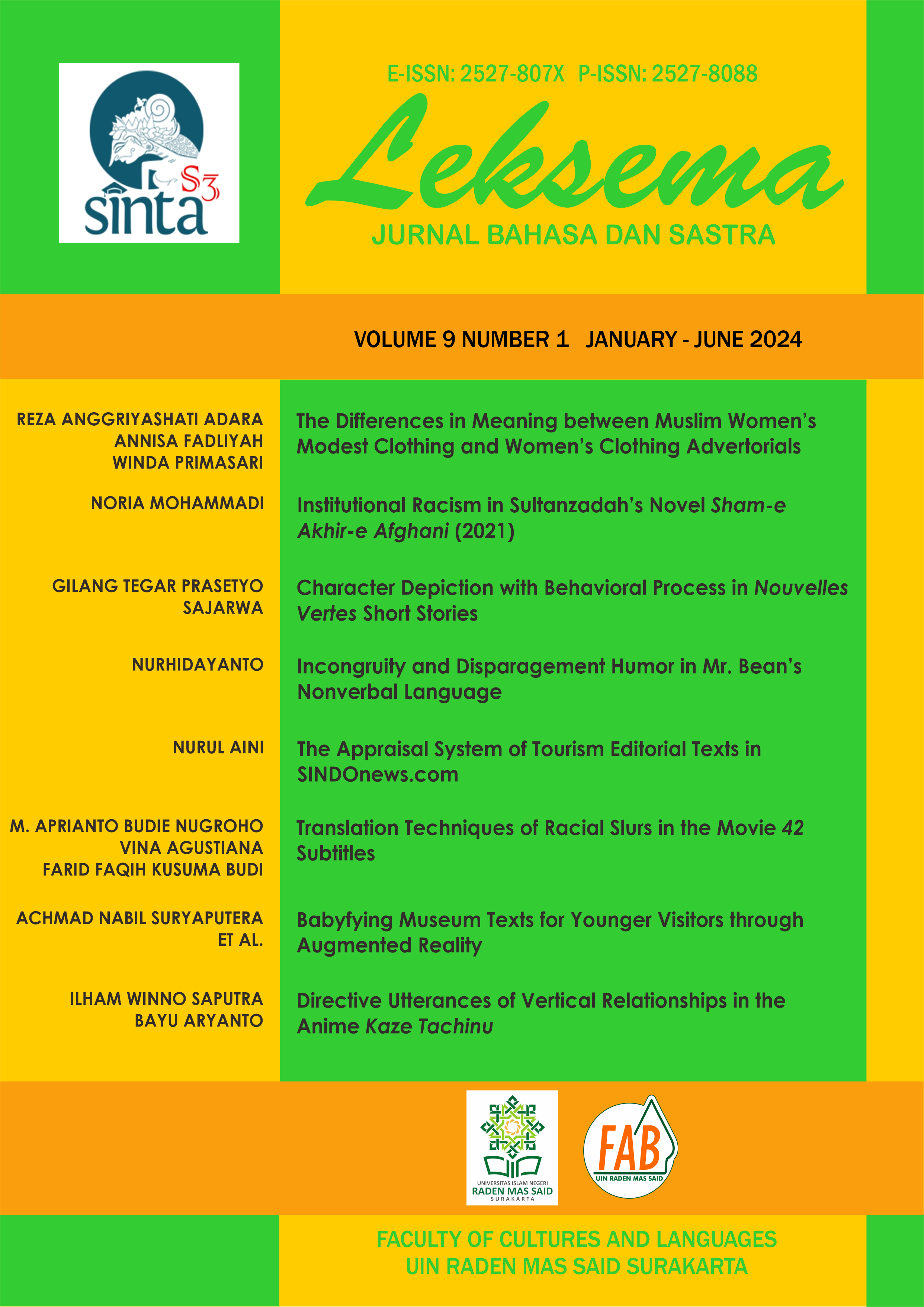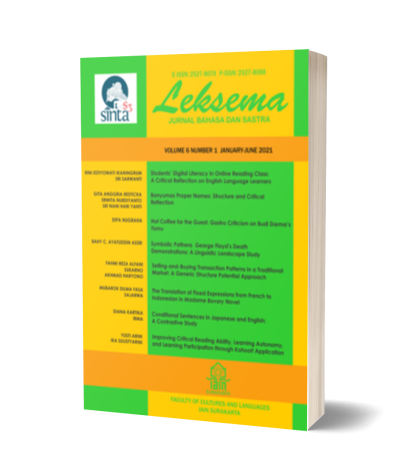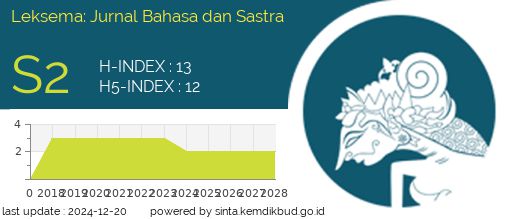INSTITUTIONAL RACISM IN SULTANZADAH'S NOVEL 'SHAM-E AKHIR-E AFGHANI' (2021)
DOI:
https://doi.org/10.22515/ljbs.v9i1.7884Keywords:
Aghanistan, Hazaras, institutional racism, PashtunsAbstract
This research addresses institutional racism in Afghanistan, focusing on Mohammad Asif Sultanzadah's novel entitled Sham-e Akhir-e Afghani (2021). Utilizing the theoretical framework of institutional racism from Carmichael and Hamilton (1967), this study employs a qualitative approach with textual analysis as the primary tool. In the novel, Sultanzadah’s narrative highlights institutional racism perpetrated by extremist Pashtuns (Taliban) and Afghan government against Hazaras. Findings indicate that racism persists in Afghan society, with Hazaras that differ in ethnicity, religion, and culture, experiencing significant discrimination, particularly in various social settings. While Pashtuns are seen as a superior democratic power condemning individual racism, Hazaras face systemic racial discrimination in education, relationships, housing, and the economic system. This study underscores the urgent need to address institutional racism in Afghanistan.
Downloads
References
Al Ramadhan, Muhammad Fakhran. 2021. “Rasisme dalam Novel The Kite Runner.” Paradigma 18 (2): 10–23. https://doi.org/10.33558/paradigma.v18i2.2925.
Alizada, Nazifa. 2016. “One Year After Tabassum, Afghan Women Search for Their Own Voice.” Women and Girls, November 30. https://deeply.thenewhumanitarian.org/womenandgirls/community/2016/11/ 30/one-year-tabassum-afghan-women-search-voice.html.
Carmichael, Stokely. 1967. Black Power and the Third World. https://www.freedomarchives. org/Documents/Finder/Black%20Liberation%20Disk/Black%20Power!/SugahData/Books/Carmichael.S.pdf.
Creswell, John W. 2014. Research Design: Qualitative, Quantitative, and Mixed Methods Approaches. 4th edition. Thousand Oaks: SAGE Publications.
Hazar, Kamran Mir. 2010. “Hazaras Are Victims of the Blame Game in Afghanistan.” The Guardian, July 19. Section Opinion. https://www.theguardian.com/commentisfree/ 2010/jul/19/hazaras-blame-game-afghanistan.
Hylton, Kevin. 2012. “Talk the Talk, Walk the Walk: Defining Critical Race Theory in Research.” Race Ethnicity and Education 15 (1): 23–41. https://doi.org/10.1080/13613324.2012. 638862.
Javed, Maryam, Sana Batool, and Mahnoor Fatima. 2021. “Being Black Means Being Powerless: Exploring Institutional Racism in Nic Stone’s Dear Martin (2017).” Global Media and Social Sciences Research Journal.
Kumar, Amit. 2018. “Racial Dehumanization of Hazaras in The Kite Runner of Khaled Hosseni” International Journal of Creative Research Thought (IJCRT) 6 (1): 264-268. https://ijcrt.org/papers/IJPUB1801042.pdf
McKee, Alan. 2004. Textual Analysis: A Beginner’s Guide. London: SAGE.
O’Dell, Rene L. et al. 2014. Introduction to Sociology: A Collaborative Approach. Fourth edition. Boise: Ashbury Publishing.
Reskin, Barbara. 2012. “The Race Discrimination System.” Annual Review of Sociology 38 (1): 17–35. https://doi.org/10.1146/annurev-soc-071811-145508.
Smith, Jason A. 2017. “Textual Analysis.” In The International Encyclopedia of Communication Research Methods, 1–7. Hoboken: John Wiley & Sons, Ltd. https://doi.org/10.1002/ 9781118901731. iecrm0248.
Spickard, Paul R. 2004. “The Illogic of American Racial Categories.” In “Mixed Race” Studies. London: Routledge.
Sultanzadah, Mohammad Asif. 2021. Sham-e-Akhir-e Afghani.
Wright. 2009. “Racial Inequality.” In . https://www.sscc.wisc.edu/soc/faculty/pages/wright/ ContemporaryAmericanSociety/Chapter%2014%20--%20Racial%20inequality--Norton %20August.pdf.
Yetman, Norman R (ed.). 1999. Majority and Minority: The Dynamics of Race and Ethnicity in American Life. 6th edition. Boston: Allyn and Bacon.
Downloads
Published
Issue
Section
License
Copyright (c) 2024 Leksema: Jurnal Bahasa dan Sastra

This work is licensed under a Creative Commons Attribution-NonCommercial-ShareAlike 4.0 International License.
The copyright of the received article shall be assigned to the publisher of the journal. The intended copyright includes the right to publish the article in various forms (including reprints). The journal maintains the publishing rights to published articles.
In line with the license, the authors and users (readers or other researchers) are allowed to share and adapt the material only for non-commercial purposes. In addition, the material must be given appropriate credit, provided with a link to the license, and indicated if changes were made. If authors remix, transform or build upon the material, authors must distribute their contributions under the same license as the original.







